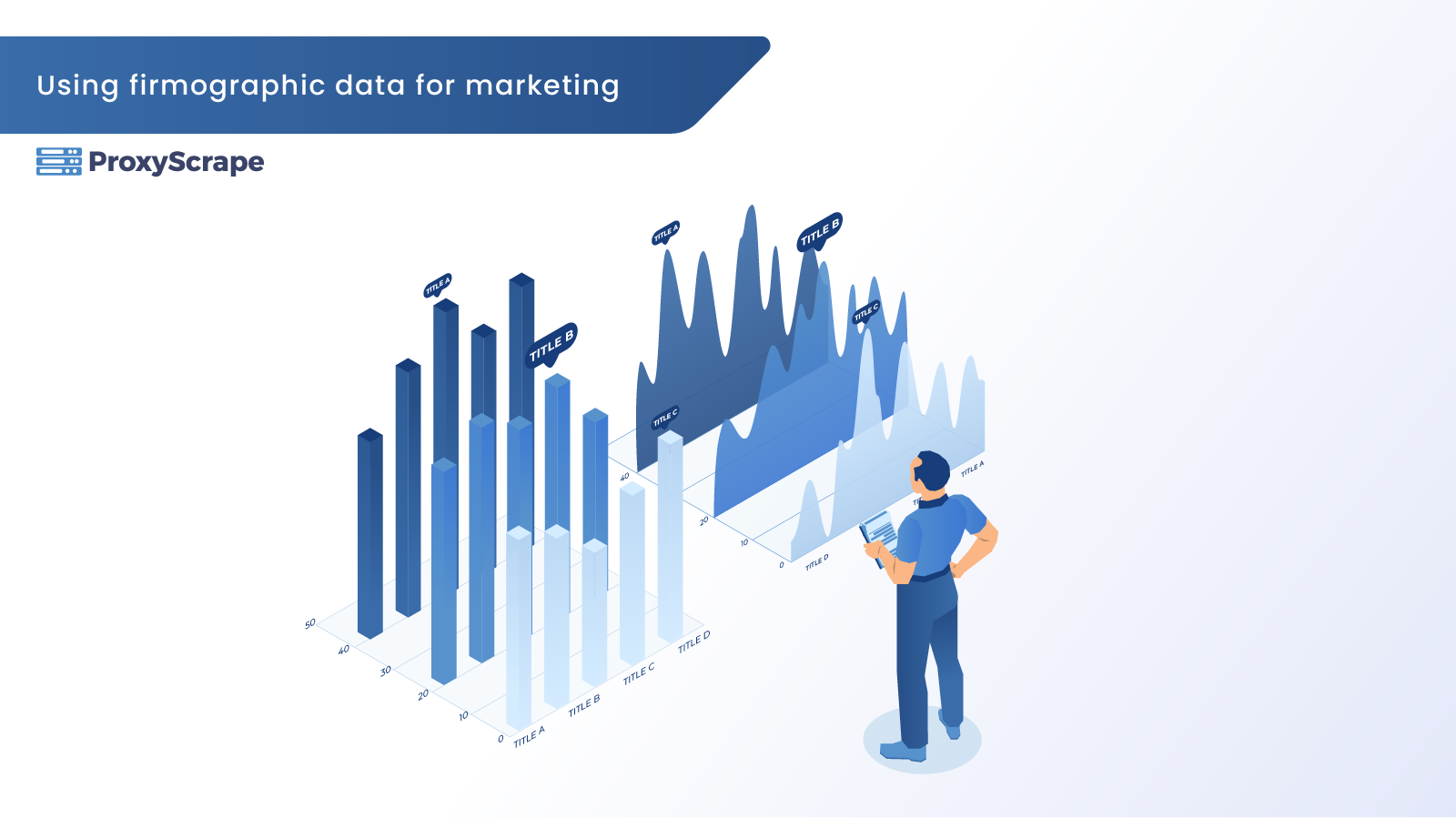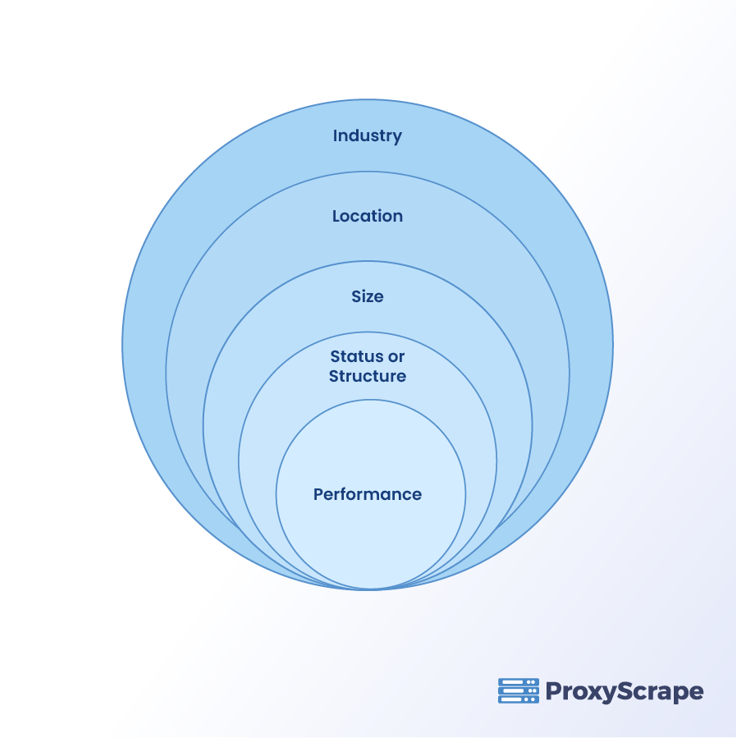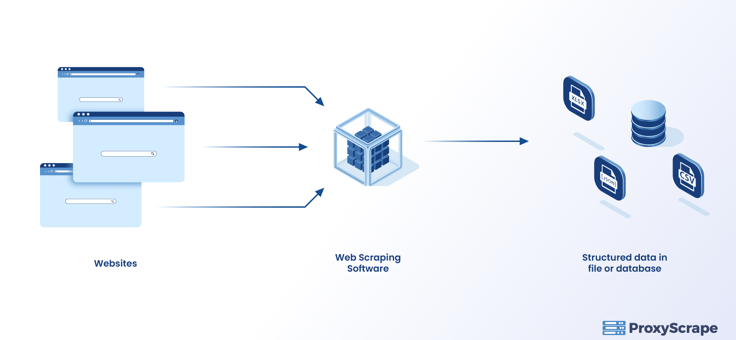Using Firmographic Data for Marketing

When it comes to personalization in target marketing, it is harder for B2B marketers to neglect the value of firmographic data. Although the stats show that personalization enhances customer relationships and thus the conversion rates, many organizations have struggled to develop personalization strategies using existing data. This article will provide you with an overview of
When it comes to personalization in target marketing, it is harder for B2B marketers to neglect the value of firmographic data. Although the stats show that personalization enhances customer relationships and thus the conversion rates, many organizations have struggled to develop personalization strategies using existing data.
This article will provide you with an overview of firmographic data, its benefits, and, more significantly, how to obtain it, as well as its relationships with demographic data.
Let’s move on, folks, without further ado.

What is Firmographic data?
In simpler terms, firmographic data refers to data about an organization that assists marketers in implementing strategies to drive more leads and serve their target market better in the future. These data include :
- Geographical location, including the regions under which it operates and the location of its main branch
- Type of the organization(B2B, B2C, or business-to-government -B2G)
- Industry type
- Company size (total number of employees)
- Revenue (number of sales and net profit earnings)
- Technologies used
- Type of the organization, including its legal status and ownership structure.

Looking beyond the firmographic data, B2B companies also rely on demographic data. It is to advance the target audience’s buying patterns with preferences.
Before diving further into firmographics data, let’s discuss a bit about demographic data and how they correlate with firmographic data.
What is Demographic data?
Demographic data refers to data about individuals with an organization. Some of the demographic data that B2B marketers kneen to investigate are:
- Name
- Job title
- Genter
- Department
- Phone number
- Email addresses
- Website
- Cultural background
- Performance
- Purchasing power: indicates whether the individual is the right person to consult or makes the correct marketing decisions.
How does Firmographic data overlap with Demographic data?
As you just saw, the apparent difference between the two is that demographics focus on peoples’ data with an organization. In contrast, firmographics focus on an organization’s data.
B2B marketers use demographic and firmographic data to create the ideal customer profile; it is a general description of a consumer who benefits from your product or solution with the highest value in return.
To achieve an ideal customer profile, the B2B marketers should focus on individuals accountable for making buying decisions within organizations. You may ask how?
Well, B2B marketers should combine both forms of data to identify who these people are and their workplace’s circumstances, the operational environment, and last but not least, the company they’ll be working for. It is beneficial for segmentation marketing.
So, as a result of this combination, it creates a customized template from which you could carry out segmentation marketing. It also solves the absence of detail, which is the critical drawback of firmographic segmentation. Furthermore, it solves the lack of data resulting from just relying on demographic data.
Why use Firmographic data?
Using firmographic and demographic data enables you as a B2B marketer to have a comprehensive view of your prospects.
They would help you identify the qualified prospects (who is your ideal customer?) vs. the unqualified ones (who is not your perfect customer?). Therefore firmographic data has the following benefits:
1.Discover business opportunities
Firmographic data enables organizations to discover business opportunities in the target market by assisting in answering critical questions. They include what type of companies exist in the market, the geographical location of the organizations in the target market, the number of employees they possess, products the target companies launch, the value of their business, and so forth.
2. Creating Personalized content
Currently, marketers have created personalized content through various channels: email marketing, search engine marketing, blog posts, videos, ads, SMS, online forums, etc. So with firmographic data, B2B marketers would undoubtedly find it comfortable to implement B2B segmentation. You can do it with personalized content for each target than generalized content.
For instance, a buyer working for a multinational mega-company would have contrasting requirements to a start-up company trying to put its feet on the business. So if your content strategy had identical blog posts or videos for both companies, it would not make sense.
This same concept applies to different segments within the same company for creating personalized content.
3. Enhances ad targeting
You would target just the most qualified leads when you have firmographic data. As a result, you would not waste your time and money allocated for ads on unwanted and unqualified leads, and hence you will minimize making wrong assumptions.
Overall your Return Of Investment (ROI) would increase and enhance the targeting of ads.
4. Simplifies the sales funnel building process
A sales funnel building is the successive processes that a potential client must go through in order to become a customer. In B2B marketing, this sequence of steps takes much longer time than in B2C marketing.
In B2B marketing, the marketing professionals must take the lead through a prolonged duration to convert them into customers through lead generation activities. This is due to many decision-makers involved, the requirement for product demonstrations, a lengthy approval procedure, and the need to do a detailed ROI analysis.
In contrast, this process is relatively more straightforward with firmographic data than I mentioned above. This is because the firmographic data allows both sales and marketing teams to recognize what a good prospect looks like and how they may focus and adjust their lead generation efforts to grab such an opportunity in a way that makes its path to becoming a client as simple as possible..
5. Improves the Account Based Marketing (ABM)
With the rise of Account Based Marketing(ABM), firmographic data is an absolute necessity.ABM had received the third-highest budget allocation of 16% after advertising and technology with 18% and 7%, respectively, according to the 2020 State of Marketing Report. These figures thus show the importance of ABM, particularly during the Covid 19 era.
In contrast to total addressable marketing (TAM), which sells and markets to the entire TAM, ABM focuses on specific and targeted accounts. As a result, after you’ve identified the correct target organizations, you may send highly tailored messages to them.
Then, in order to match your profile, you must collect approved contacts from these firms. As a result, firmographic data is critical in assisting you in identifying the proper organizations or accounts to target.
What are the different ways to extract Firmographic data?
So now you know the value of firmographic data. However, to get the best use of it for your organization, you must extract them using some of the methods that we’ll discuss below.
Luckily, there are several ways to extract them and classify them into several categories, such as direct sales calls, online sources, and B2B data providing services, which we”ll look into below:
1. Direct sales call
You could directly contact the target company and get all the critical firmographic data. However, the major drawback of this method is that you may feel reluctant, awkward, and often unethical to ask questions like “what is your company’s annual revenue?” or something similar.
2. Online Sources
Online sources include company websites, company blog pages, company social media pages, company registers, employment websites, tax declarations, news outlets, public databases, white papers, etc.
However, extracting firmographic data from these public services can be highly time-consuming. Although you would discover valuable information on the company’s social media pages, manual extraction of such information might not be a viable option. So web scraping would be the way to go in such circumstances, which you”ll discover a little later.
Therefore you may turn into B2B data providing services which we’ll look into below.
3. B2B data providing services
Some of these services include financial and market intelligence platforms like Wall Street Journal, Yahoo! Finance, etc. You could also use Data-as-a-Service (DaaS), which will require you to make a payment to collect firmographic data.
However, the data you get from B2B providers like Daas will not be tailored to your requirement. This is because usually, what such providers do is that they buy B2B data such as firmographic data from other B2B providers and sell it to you.
Therefore choosing a B2B data provider, you’ll ultimately be disappointed as you’ll not get the total ROI for the investment that you make in it. After all, investing in data for your business is a considerable investment.
The most feasible option for extracting the data
Now you have looked into several methods of extracting firmographic data. Web scraping data from public sources has been a proven success over the years. Web scraping involves using automated bots to parse the source code of the web pages and extract data according to the parameters you define.
With web scraping, you’ll have complete control over the exact data you would like to extract by eliminating unnecessary data, which is a significant concern with some B2B data providers.
Furthermore, the web scrapers will navigate to the websites of your target companies and extract up-to-date information from there. You could also extract the company’s personal data from social media pages through web scraping.
For a detailed article on web scraping, you may refer to this article.
However, web scraping is not easy as it sounds and may present several challenges that you’ll find out in the next section.

What are common challenges to web scraping?
As mentioned in the previous section, web scraping is not without challenges. In a nutshell, some of these challenges include often encountering the target website blocking your IP address when you connect multiple times using the same IP address. Also, you would have to confront CAPTCHAS, honeypot traps, user agents, which the web administrators of host websites employ to protect the data in their websites.
So you may ask how to overcome such challenges. This is what we’ll discuss next precisely.
Overcoming challenges to web scraping
To overcome some of the roadblocks to web scraping, you can use proxies. As proxies mask your IP address and replace it with the proxy server, the target websites will not recognize you. However, using a single proxy might not be effective as it may cause you a block again when you connect multiple times.
Therefore a pool of rotating residential proxies would be your ideal choice. Such a pool will rotate your IP address, and hence the target website assumes that the requests originate from several users when it is one user making all the requests.
You may find further information in this article.
How ProxyScrape could help you with Proxies
ProxyScrape contains 7 million residential proxies with unlimited concurrent connections. Furthermore, you”ll have a chance to connect to proxies from various locations across the globe, which will be ideal for browsing the content that is banned in your geographical location.
Furthermore, you’ll have a fantastic customer support team to assist you with any of your queries.
For further information about our proxy services, please take a look here.
Conclusion
We hope you understand why the firmographic data is needed for your B2B marketing team in this article. As I have mentioned in this article, it can be an excellent resource for your B2B marketing strategy. While there are several ways and means of extracting it, web scraping is the most feasible way to extract it, as you just saw in this article.
The use of proxies and your web scraper tool will be ideal for pulling out the data from websites you need for your B2B campaign.